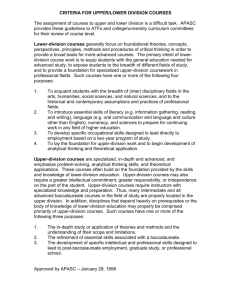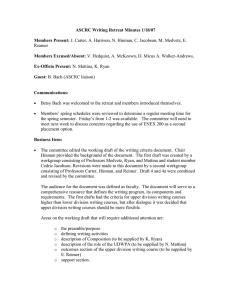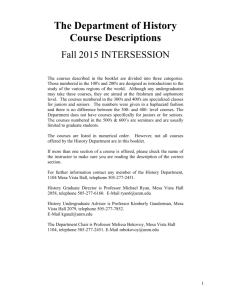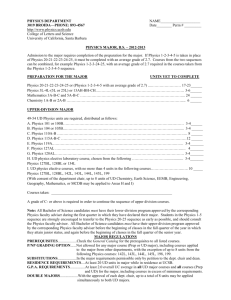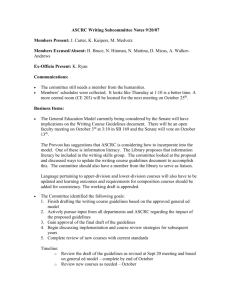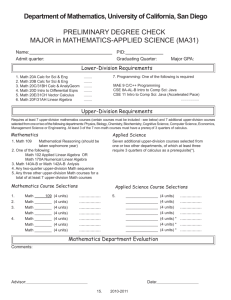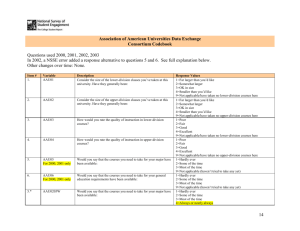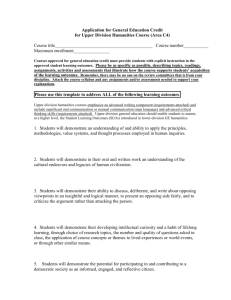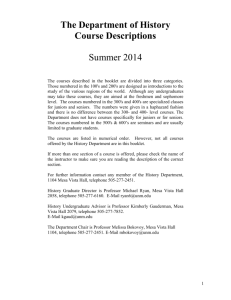Distinguishing between lower- and upper
advertisement
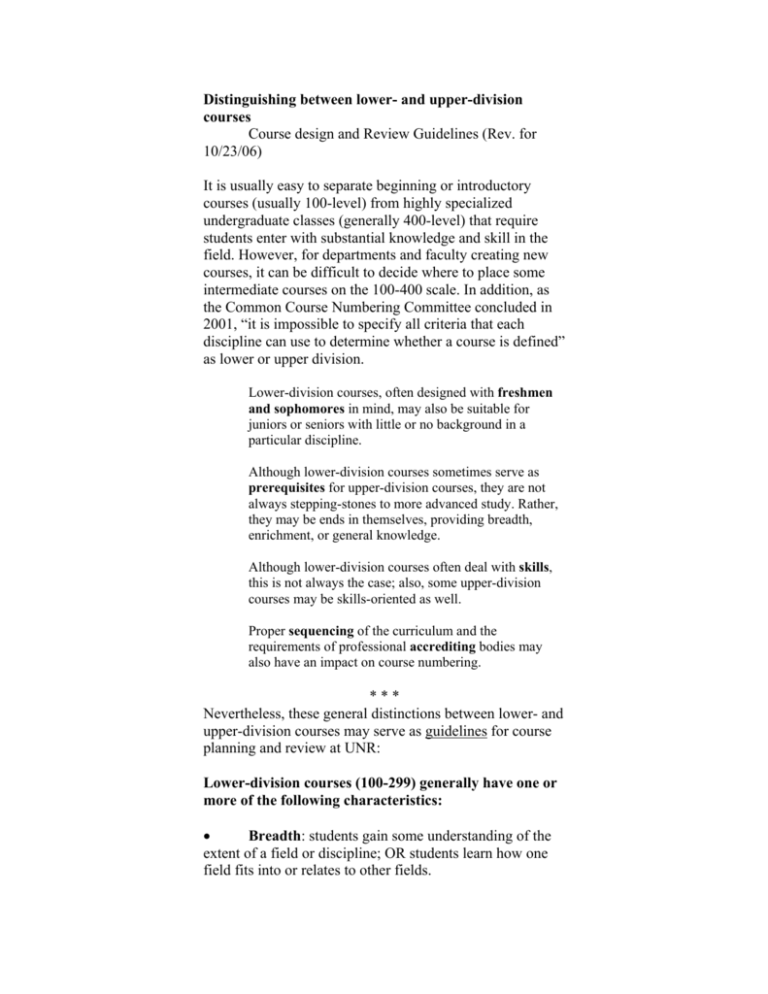
Distinguishing between lower- and upper-division courses Course design and Review Guidelines (Rev. for 10/23/06) It is usually easy to separate beginning or introductory courses (usually 100-level) from highly specialized undergraduate classes (generally 400-level) that require students enter with substantial knowledge and skill in the field. However, for departments and faculty creating new courses, it can be difficult to decide where to place some intermediate courses on the 100-400 scale. In addition, as the Common Course Numbering Committee concluded in 2001, “it is impossible to specify all criteria that each discipline can use to determine whether a course is defined” as lower or upper division. Lower-division courses, often designed with freshmen and sophomores in mind, may also be suitable for juniors or seniors with little or no background in a particular discipline. Although lower-division courses sometimes serve as prerequisites for upper-division courses, they are not always stepping-stones to more advanced study. Rather, they may be ends in themselves, providing breadth, enrichment, or general knowledge. Although lower-division courses often deal with skills, this is not always the case; also, some upper-division courses may be skills-oriented as well. Proper sequencing of the curriculum and the requirements of professional accrediting bodies may also have an impact on course numbering. *** Nevertheless, these general distinctions between lower- and upper-division courses may serve as guidelines for course planning and review at UNR: Lower-division courses (100-299) generally have one or more of the following characteristics: • Breadth: students gain some understanding of the extent of a field or discipline; OR students learn how one field fits into or relates to other fields. • Foundation: students become acquainted with principles, terms, methods, and perspectives of a discipline or professional field, as a basis for more advanced or specialized study. Lower-division courses are those that majors are expected to complete in their first two years of study in the subject. • General education: students develop essential skills, attitudes, and practices (e.g., basics of critical thinking, numeracy, communication, problem solving) important in many different fields of higher education (e.g., lower-division Core) and perhaps in everyday life. • Preparation: lower-division courses may assume some basic entry-level knowledge, such as high school preparation in the field. Upper-division courses (300-400) generally have one or more of the following characteristics: • Depth/Focus: students make in-depth study of a discipline’s theories and methods, developing an understanding of the applications and limitations of those theories. • Specialization: students develop specific intellectual and professional abilities that will enable them to succeed or progress in a particular field or professional practice. • Refinement: students build upon the “general education” background noted above, applying these skills more discerningly or in more challenging contexts. • Preparation: prerequisites may include more general courses, student class standing, GPA requirements, or admission to a pre-professional program. Thus, majors and minors generally take upper-division courses in their junior and senior years. A note on General Capstone courses: These courses, though not necessarily specialized or focused on in-depth study of one discipline, have an integrative function. Because one of the primary goals of these courses is to integrate knowledge gained from earlier studies, these are necessarily offered at the upper-division level and limited to juniors and seniors or, in some cases, seniors only.
